I 'm more concerned with them using Aspartame

.
Aspartame: Decades of Science Point to Serious Health Risks
PrintEmailShareTweet
Posted on
November 15, 2020 by
Stacy Malkan
Long History of Concerns
Key Scientific Studies on Aspartame
Industry PR Efforts
Scientific References
Key Facts About Diet Soda Chemical
- Dozens of studies have linked aspartame — the world’s most widely used artificial sweetener — to serious health problems, including cancer, cardiovascular disease, Alzheimer’s disease, seizures, stroke and dementia, as well as negative effects such as intestinal dysbiosis, mood disorders, headaches and migraines.
- Evidence also links aspartame to weight gain, increased appetite and obesity-related diseases. See our fact sheet: Diet Soda Chemical Tied to Weight Gain.
- Evidence linking aspartame to weight gain raises questions about the legality of marketing aspartame-containing products as “diet” drinks or weight loss products. In April 2015, US Right to Know petitioned the Federal Trade Commission (FTC) and the Food and Drug Administration (FDA) to investigate the marketing and advertising practices of “diet” products that contain aspartame. See FTC response and FDA response.
- The U.S. Food and Drug Administration said aspartame is “safe for the general population under certain conditions.” The agency first approved aspartame for some uses in 1981. Many scientists, then and now, have said the approval was based on suspect data and should be reconsidered.
What is Aspartame?
- Aspartame is the world’s most widely used artificial sweetener. It is also marketed as NutraSweet, Equal, Sugar Twin and AminoSweet.
- Aspartame is present in more than 6,000 products, including Diet Coke and Diet Pepsi, Kool Aid, Crystal Light, Tango and other artificially sweetened drinks; sugar-free Jell-O products; Trident, Dentyne and most other brands of sugar-free gum; sugar-free hard candies; low- or no-sugar sweet condiments such as ketchups and dressings; children’s medicines, vitamins and cough drops.
- Aspartame is a synthetic chemical composed of the amino acids phenylalanine and aspartic acid, with a methyl ester. When consumed, the methyl ester breaks down into methanol, which may be converted into formaldehyde.
Decades of Studies Raise Concerns about Aspartame
Since aspartame was first approved in 1974, both FDA scientists and independent scientists have raised concerns about possible health effects and shortcomings in the science submitted to the FDA by the manufacturer, G.D. Searle. (Monsanto bought Searle in 1984).
In 1987, UPI published a series of investigative articles by Gregory Gordon reporting on these concerns, including early studies linking aspartame to health problems, the poor quality of industry-funded research that led to its approval, and the revolving-door relationships between FDA officials and the food industry. Gordon’s series is an invaluable resource for anyone seeking to understand the history of aspartame/NutraSweet:
Flaws in EFSA assessment
In a July 2019
paper in the Archives of Public Health, researchers at the University of Sussex provided a detailed analysis of the EFSA’s 2013 safety assessment of aspartame and found that the panel discounted as unreliable every one of 73 studies that indicated harm, and used far more lax criteria to accept as reliable 84% of studies that found no evidence of harm. “Given the shortcomings of EFSA’s risk assessment of aspartame, and the shortcomings of all previous official toxicological risk assessments of aspartame, it would be premature to conclude that it is acceptably safe,” the study concluded.
See
EFSA’s response and a follow up by researchers Erik Paul Millstone and Elizabeth Dawson in the Archives of Public Health,
Why did EFSA to reduce its ADI for aspartame or recommend its use should no longer be permitted? News coverage:
- “World’s most popular artificial sweetener must be banned, say experts. Two food safety experts have called for the widely used artificial sweetener, aspartame, to be banned in the UK and questions why it was deemed acceptable in the first place,” New Food Magazine (11.11.2020)
- “‘Sales of aspartame should be suspended’: EFSA accused of bias in safety assessment,” by Katy Askew, Food Navigator (7.27.2019)
Health effects and key studies
While many studies, some of them industry sponsored, have reported no problems with aspartame, dozens of independent studies conducted over decades have linked aspartame to a long list of health problems, including:
Cancer
In the most comprehensive cancer research to date on aspartame, three lifespan studies conducted by the Cesare Maltoni Cancer Research Center of the Ramazzini Institute, provide consistent evidence of carcinogenicity in rodents exposed to the substance.
- Aspartame “is a multipotential carcinogenic agent, even at a daily dose of … much less than the current acceptable daily intake,” according to a 2006 lifespan rat study in Environmental Health Perspectives.1
- A follow-up study in 2007 found significant dose-related increases in malignant tumors in some of the rats. “The results … confirm and reinforce the first experimental demonstration of [aspartame’s] multipotential carcinogenicity at a dose level close to the acceptable daily intake for humans … when life-span exposure begins during fetal life, its carcinogenic effects are increased,” the researchers wrote in Environmental Health Perspectives.2
- The results of a 2010 lifespan study “confirm that [aspartame] is a carcinogenic agent in multiple sites in rodents, and that this effect is induced in two species, rats (males and females) and mice (males),” the researchers reported in American Journal of Industrial Medicine.3
A 2021 review of the Ramazzini Institute data validated the conclusions of the original RI studies. See, “Aspartame and cancer — new evidence of causation,”
Environmental Health. The findings, “confirm that aspartame is a chemical carcinogen in rodents. They confirm the very worrisome finding that prenatal exposure to aspartame increases cancer risk in rodent offspring.”
Harvard researchers in 2012 reported a positive association between aspartame intake and increased risk of non-Hodgkin lymphoma and multiple myeloma in men, and for leukemia in men and women. The findings “preserve the possibility of a detrimental effect … on select cancers” but “do not permit the ruling out of chance as an explanation,” the researchers wrote in the
American Journal of Clinical Nutrition.4
In a 2014 commentary in
American Journal of Industrial Medicine, the Maltoni Center researchers wrote that the studies submitted by G. D. Searle for market approval “do not provide adequate scientific support for [aspartame’s] safety. In contrast, recent results of life-span carcinogenicity bioassays on rats and mice published in peer-reviewed journals, and a prospective epidemiological study, provide consistent evidence of [aspartame’s] carcinogenic potential. On the basis of the evidence of the potential carcinogenic effects … a re-evaluation of the current position of international regulatory agencies must be considered an urgent matter of public health.”5
Brain Tumors
In 1996, researchers reported in the
Journal of Neuropathology & Experimental Neurology on epidemiological evidence connecting the introduction of aspartame to an increase in an aggressive type of malignant brain tumors. “Compared to other environmental factors putatively linked to brain tumors, the artificial sweetener aspartame is a promising candidate to explain the recent increase in incidence and degree of malignancy of brain tumors … We conclude that there is need for reassessing the carcinogenic potential of aspartame.”6
- Neuroscientist Dr. John Olney, lead author of the study, told 60 minutes in 1996: “there has been a striking increase in the incidence of malignant brain tumors (in the three to five years following the approval of aspartame) … there is enough basis to suspect aspartame that it needs to be reassessed. FDA needs to reassess it, and this time around, FDA should do it right.”
Early studies on aspartame in the 1970s found evidence of brain tumors in laboratory animals, but those studies
were not followed up.
Cardiovascular Disease
A 2017 meta-analysis of research on artificial sweeteners, published in the
Canadian Medical Association Journal, found no clear evidence of weight loss benefits for artificial sweeteners in randomized clinical trials, and reported that cohort studies associate artificial sweeteners with “increases in weight and waist circumference, and higher incidence of obesity, hypertension, metabolic syndrome, type 2 diabetes and cardiovascular events.”7 See also:
A 2016 paper in
Physiology & Behavior reported, “there is a striking congruence between results from animal research and a number of large-scale, long-term observational studies in humans, in finding significantly increased weight gain, adiposity, incidence of obesity, cardiometabolic risk, and even total mortality among individuals with chronic, daily exposure to low-calorie sweeteners – and these results are troubling.”8
Women who consumed more than two diet drinks per day “had a higher risk of [cardiovascular disease] events … [cardiovascular disease] mortality … and overall mortality,” according to a 2014 study from the Women’s Health Initiative published in the
Journal of General Internal Medicine.9
Stroke, Dementia and Alzheimer’s Disease
People drinking diet soda daily were almost three times as likely to develop stroke and dementia as those who consumed it weekly or less. This included a higher risk of ischemic stroke, where blood vessels in the brain become obstructed, and Alzheimer’s disease dementia, the most common form of dementia, reported a
2017 study in Stroke.10
In the body, the methyl ester in aspartame metabolizes into
methanol and then it may be converted to formaldehyde, which has been linked to Alzheimer’s disease. A two-part study published in 2014 in the
Journal of Alzheimer’s Disease linked chronic methanol exposure to memory loss and Alzheimer’s Disease symptoms in mice and monkeys.
- “[M]ethanol-fed mice presented with partial AD-like symptoms … These findings add to a growing body of evidence that links formaldehyde to [Alzheimer’s disease] pathology.” (Part 1)11
- “[M]ethanol feeding caused long-lasting and persistent pathological changes that were related to [Alzheimer’s disease] … these findings support a growing body of evidence that links methanol and its metabolite formaldehyde to [Alzheimer’s disease] pathology.” (Part 2)12
Seizures
“Aspartame appears to exacerbate the amount of EEG spike wave in children with absence seizures. Further studies are needed to establish if this effect occurs at lower doses and in other seizure types,” according to a 1992 study in
Neurology.13
Aspartame “has seizure-promoting activity in animal models that are widely used to identify compounds affecting … seizure incidence,” according to a 1987 study in
Environmental Health Perspectives.14
Very high aspartame doses “might also affect the likelihood of seizures in symptomless but susceptible people,” according to a 1985 study in
The Lancet. The study describes three previously healthy adults who had grand mal seizures during periods when they were consuming high doses of aspartame.15
Neurotoxicity, Brain Damage and Mood Disorders
Aspartame has been linked to behavioral and cognitive problems including learning problems, headache, seizure, migraines, irritable moods, anxiety, depression, and insomnia, wrote the researchers of a 2017 study in
Nutritional Neuroscience. “Aspartame consumption needs to be approached with caution due to the possible effects on neurobehavioral health.”16
“Oral aspartame significantly altered behavior, anti-oxidant status and morphology of the hippocampus in mice; also, it may probably trigger hippocampal adult neurogenesis,” reported a 2016 study in
Neurobiology of Learning and Memory.17
“Previously, it has been reported that consumption of aspartame could cause neurological and behavioural disturbances in sensitive individuals. Headaches, insomnia and seizures are also some of the neurological effects that have been encountered,” according to a 2008 study in the
European Journal of Clinical Nutrition. “[W]e propose that excessive aspartame ingestion might be involved in the pathogenesis of certain mental disorders … and also in compromised learning and emotional functioning.”18
“(N)eurological symptoms, including learning and memory processes, may be related to the high or toxic concentrations of the sweetener [aspartame] metabolites,” states a 2006 study in
Pharmacological Research.19
Aspartame “could impair memory retention and damage hypothalamic neurons in adult mice,” according to a 2000 mice study published in
Toxicology Letters.20
“(I)ndividuals with mood disorders are particularly sensitive to this artificial sweetener and its use in this population should be discouraged,” according to a 1993 study in the
Journal of Biological Psychiatry.21
High doses of aspartame “can generate major neurochemical changes in rats,” reported a 1984 study in
American Journal of Clinical Nutrition.22
Experiments indicated brain damage in infant mice following oral intake of aspartate, and showing that “aspartate [is] toxic to the infant mouse at relatively low levels of oral intake,” reported a 1970 study in
Nature.23
Headaches and Migraines
“Aspartame, a popular dietetic sweetener, may provoke headache in some susceptible individuals. Herein, we describe three cases of young women with migraine who reported their headaches could be provoked by chewing sugarless gum containing aspartame,” according to a 1997 paper in
Headache Journal.24
A crossover trial comparing aspartame and a placebo published in 1994 in
Neurology, “provides evidence that, among individuals with self-reported headaches after ingestion of aspartame, a subset of this group report more headaches when tested under controlled conditions. It appears that some people are particularly susceptible to headaches caused by aspartame and may want to limit their consumption.”25
A survey of 171 patients at the Montefiore Medical Center Headache Unit found that patients with migraine “reported aspartame as a precipitant three times more often than those having other types of headache … We conclude aspartame may be an important dietary trigger of headache in some people,” 1989 study in
Headache Journal.26
A crossover trial comparing aspartame and a placebo on the frequency and intensity of migraines “indicated that the ingestion of aspartame by migraineurs caused a significant increase in headache frequency for some subjects,” reported a 1988 study in
Headache Journal.27
Kidney Function Decline
Consumption of more than two servings a day of artificially sweetened soda “is associated with a 2-fold increased odds for kidney function decline in women,” according to a 2011 study in the
Clinical Journal of American Society of Nephrology.28
Weight Gain, Increased Appetite and Obesity Related Problems
Several studies link aspartame to weight gain, increased appetite, diabetes, metabolic derangement and obesity-related diseases. See our fact sheet:
Diet Soda Chemical Tied to Weight Gain.
This science linking aspartame to weight gain and obesity-related diseases raises questions about the legality of marketing aspartame-containing products as “diet” or weight loss aids. In 2015, USRTK petitioned the
Federal Trade Commission and
FDA to investigate the marketing and advertising practices of “diet” products that contain a chemical linked to weight gain. See
related news coverage, response from FTC, and
response from FDA.
Diabetes and Metabolic Derangement
Aspartame breaks down in part into phenylalanine, which interferes with the action of an enzyme intestinal alkaline phosphatase (IAP) previously shown to prevent metabolic syndrome (a group of symptoms associated with type 2 diabetes and cardiovascular disease) according to a 2017 study in
Applied Physiology, Nutrition and Metabolism. In this study, mice receiving aspartame in their drinking water gained more weight and developed other symptoms of metabolic syndrome than animals fed similar diets lacking aspartame. The study concludes, “IAP’s protective effects in regard to the metabolic syndrome may be inhibited by phenylalanine, a metabolite of aspartame, perhaps explaining the lack of expected weight loss and metabolic improvements associated with diet drinks.”29
People who regularly consume artificial sweeteners are at increased risk of “excessive weight gain, metabolic syndrome, type 2 diabetes, and cardiovascular disease,” according to a 2013 Purdue review over 40 years published in
Trends in Endocrinology & Metabolism.30
In a study that followed 66,118 women over 14 years, both sugar-sweetened beverages and artificially sweetened beverages were associated with risk of Type 2 diabetes. “Strong positive trends in T2D risk were also observed across quartiles of consumption for both types of beverage … No association was observed for 100% fruit juice consumption,” reported the 2013 study published in
American Journal of Clinical Nutrition.31
Intestinal Dysbiosis, Metabolic Derangement and Obesity
Artificial sweeteners can induce glucose intolerance by altering the gut microbiota, according to a
2014 study in Nature. The researchers wrote, “our results link NAS [non-caloric artificial sweetener] consumption, dysbiosis and metabolic abnormalities, thereby calling for a reassessment of massive NAS usage … Our findings suggest that NAS may have directly contributed to enhancing the exact epidemic [obesity] that they themselves were intended to fight.”32
A 2016 study in
Applied Physiology Nutrition and Metabolism reported, “Aspartame intake significantly influenced the association between body mass index (BMI) and glucose tolerance… consumption of aspartame is associated with greater obesity-related impairments in glucose tolerance.”33
According to a 2014 rat study in
PLOS ONE, “aspartame elevated fasting glucose levels and an insulin tolerance test showed aspartame to impair insulin-stimulated glucose disposal … Fecal analysis of gut bacterial composition showed aspartame to increase total bacteria…”34
Pregnancy Abnormalities: Pre Term Birth
According to a 2010 cohort study of 59,334 Danish pregnant women published in the
American Journal of Clinical Nutrition, “There was an association between intake of artificially sweetened carbonated and noncarbonated soft drinks and an increased risk of preterm delivery.” The study concluded, “Daily intake of artificially sweetened soft drinks may increase the risk of preterm delivery.”35
Overweight Babies
Artificially sweetened beverage consumption during pregnancy is linked to higher body mass index for babies, according to a 2016 study in
JAMA Pediatrics. “To our knowledge, we provide the first human evidence that maternal consumption of artificial sweeteners during pregnancy may influence infant BMI,” the researchers wrote.36
Early Menarche
The National Heart, Lung, and Blood Institute Growth and Health Study followed 1988 girls for 10 years to examine prospective associations between consumption of caffeinated and noncaffeinated sugar- and artificially sweetened soft drinks and early menarche. “Consumption of caffeinated and artificially sweetened soft drinks was positively associated with risk of early menarche in a US cohort of African American and Caucasian girls,” concluded the study published in 2015 in
Journal of American Clinical Nutrition.37
Sperm Damage
“A significant decrease in sperm function of aspartame treated animals was observed when compared with the control and MTX control,” according to a 2017 study in the
International Journal of Impotence Research. “… These findings demonstrate that aspartame metabolites could be a contributing factor for development of oxidative stress in the epididymal sperm.”38
Liver Damage and Glutathione Depletion
A mouse study published in 2017 in
Redox Biology reported, “Chronic administration of aspartame … caused liver injury as well as marked decreased hepatic levels of reduced glutathione, oxidized glutathione, γ-glutamylcysteine, and most metabolites of the trans-sulphuration pathway…”39
A rat study published in 2017 in
Nutrition Research found that, “Subchronic intake of soft drink or aspartame substantially induced hyperglycemia and hypertriacylglycerolemia… Several cytoarchitecture alterations were detected in the liver, including degeneration, infiltration, necrosis, and fibrosis, predominantly with aspartame. These data suggest that long-term intake of soft drink or aspartame-induced hepatic damage may be mediated by the induction of hyperglycemia, lipid accumulation, and oxidative stress with the involvement of adipocytokines.”40
Caution for Vulnerable Populations
A 2016 literature review on artificial sweeteners in the
Indian Journal of Pharmacology reported, “there is inconclusive evidence to support most of their uses and some recent studies even hint that these earlier established benefits … might not be true.” Susceptible populations such as pregnant and lactating women, children, diabetics, migraine, and epilepsy patients “should use these products with utmost caution.”41
Industry PR Efforts and Front Groups
From the start, G.D. Searle (later Monsanto and the NutraSweet Company) deployed aggressive PR tactics to market aspartame as a safe product. In October 1987, Gregory Gordon
reported in UPI:
“The NutraSweet Co. also has paid up to $3 million a year for a 100-person public relations effort by the Chicago offices of Burson Marsteller, a former employee of the New York PR firm said. The employee said Burson Marsteller has hired numerous scientists and physicians, often at $1,000 a day, to defend the sweetener in media interviews and other public forums. Burson Marsteller declines to discuss such matters.”
Recent reporting based on internal industry documents reveals how beverage companies such as Coca-Cola also pay third party messengers, including doctors and scientists, to promote their products and shift the blame when science ties their products to serious health problems.
See reporting by Anahad O’Connor in the
New York Times, Candice Choi in the
Associated Press, and findings from the
USRTK investigation about sugar industry propaganda and lobbying campaigns.
News articles about soda industry PR campaigns:
Overview news stories about aspartame:
USRTK Fact Sheets
Reports on Front Groups and PR Campaigns
Scientific References
[1] Soffritti M, Belpoggi F, Degli Esposti D, Lambertini L, Tibaldi E, Rigano A. “First experimental demonstration of the multipotential carcinogenic effects of aspartame administered in the feed to Sprague-Dawley rats.” Environ Health Perspect. 2006 Mar;114(3):379-85. PMID: 16507461. (
article)
[2] Soffritti M, Belpoggi F, Tibaldi E, Esposti DD, Lauriola M. “Life-span exposure to low doses of aspartame beginning during prenatal life increases cancer effects in rats.” Environ Health Perspect. 2007 Sep;115(9):1293-7. PMID: 17805418. (
article)
[3] Soffritti M et al. “Aspartame administered in feed, beginning prenatally through life span, induces cancers of the liver and lung in male Swiss mice.” Am J Ind Med. 2010 Dec; 53(12):1197-206. PMID: 20886530. (
abstract /
article)
[4] Schernhammer ES, Bertrand KA, Birmann BM, Sampson L, Willett WC, Feskanich D., “Consumption of artificial sweetener– and sugar-containing soda and risk of lymphoma and leukemia in men and women.” Am J Clin Nutr. 2012 Dec;96(6):1419-28. PMID: 23097267. (
abstract /
article)
[5] Soffritti M1, Padovani M, Tibaldi E, Falcioni L, Manservisi F, Belpoggi F., “The carcinogenic effects of aspartame: The urgent need for regulatory re-evaluation.” Am J Ind Med. 2014 Apr;57(4):383-97. doi: 10.1002/ajim.22296. Epub 2014 Jan 16. (
abstract /
article)
[6] Olney JW, Farber NB, Spitznagel E, Robins LN. “Increasing brain tumor rates: is there a link to aspartame?” J Neuropathol Exp Neurol. 1996 Nov;55(11):1115-23. PMID: 8939194. (
abstract)
[7] Azad, Meghan B., et al. Nonnutritive sweeteners and cardiometabolic health: a systematic review and meta-analysis of randomized controlled trials and prospective cohort studies. CMAJ July 17, 2017 vol. 189 no. 28 doi: 10.1503/cmaj.161390 (
abstract /
article)
[8] Fowler SP. Low-calorie sweetener use and energy balance: Results from experimental studies in animals, and large-scale prospective studies in humans. Physiol Behav. 2016 Oct 1;164(Pt B):517-23. doi: 10.1016/j.physbeh.2016.04.047. Epub 2016 Apr 26. (
abstract)
[9] Vyas A et al. “Diet Drink Consumption And The Risk of Cardiovascular Events: A Report from The Women’s Health Initiative.” J Gen Intern Med. 2015 Apr;30(4):462-8. doi: 10.1007/s11606-014-3098-0. Epub 2014 Dec 17. (
abstract /
article)
[10] Matthew P. Pase, PhD; Jayandra J. Himali, PhD; Alexa S. Beiser, PhD; Hugo J. Aparicio, MD; Claudia L. Satizabal, PhD; Ramachandran S. Vasan, MD; Sudha Seshadri, MD; Paul F. Jacques, DSc. “Sugar and Artificially Sweetened Beverages and the Risks of Incident Stroke and Dementia. A Prospective Cohort Study.” Stroke. 2017 April; STROKEAHA.116.016027 (
abstract /
article)
[11] Yang M et al. “Alzheimer’s Disease and Methanol Toxicity (Part 1): Chronic Methanol Feeding Led to Memory Impairments and Tau Hyperphosphorylation in Mice.” J Alzheimers Dis. 2014 Apr 30. (
abstract)
[12] Yang M et al. “Alzheimer’s Disease and Methanol Toxicity (Part 2): Lessons from Four Rhesus Macaques (Macaca mulatta) Chronically Fed Methanol.” J Alzheimers Dis. 2014 Apr 30. (
abstract)
[13] Camfield PR, Camfield CS, Dooley JM, Gordon K, Jollymore S, Weaver DF. “Aspartame exacerbates EEG spike-wave discharge in children with generalized absence epilepsy: a double-blind controlled study.” Neurology. 1992 May;42(5):1000-3. PMID: 1579221. (
abstract)
[14] Maher TJ, Wurtman RJ. “Possible neurologic effects of aspartame, a widely used food additive.” Environ Health Perspect. 1987 Nov; 75:53-7. PMID: 3319565. (
abstract /
article)
[15] Wurtman RJ. “Aspartame: possible effect on seizure susceptibility.” Lancet. 1985 Nov 9;2(8463):1060. PMID: 2865529. (
abstract)
[16] Choudhary AK, Lee YY. “Neurophysiological symptoms and aspartame: What is the connection?”
Nutr Neurosci. 2017 Feb 15:1-11. doi: 10.1080/1028415X.2017.1288340. (
abstract)
[17] Onaolapo AY, Onaolapo OJ, Nwoha PU. “Aspartame and the hippocampus: Revealing a bi-directional, dose/time-dependent behavioural and morphological shift in mice.”
Neurobiol Learn Mem. 2017 Mar;139:76-88. doi: 10.1016/j.nlm.2016.12.021. Epub 2016 Dec 31. (
abstract)
[18] Humphries P, Pretorius E, Naudé H. “Direct and indirect cellular effects of aspartame on the brain.” Eur J Clin Nutr. 2008 Apr;62(4):451-62. (
abstract /
article)
[19] Tsakiris S, Giannoulia-Karantana A, Simintzi I, Schulpis KH. “The effect of aspartame metabolites on human erythrocyte membrane acetylcholinesterase activity.” Pharmacol Res. 2006 Jan;53(1):1-5. PMID: 16129618. (
abstract)
[20] Park CH et al. “Glutamate and aspartate impair memory retention and damage hypothalamic neurons in adult mice.” Toxicol Lett. 2000 May 19;115(2):117-25. PMID: 10802387. (
abstract)
[21] Walton RG, Hudak R, Green-Waite R. “Adverse reactions to aspartame: double-blind challenge in patients from a vulnerable population.” J. Biol Psychiatry. 1993 Jul 1-15;34(1-2):13-7. PMID: 8373935. (
abstract /
article)
[22] Yokogoshi H, Roberts CH, Caballero B, Wurtman RJ. “Effects of aspartame and glucose administration on brain and plasma levels of large neutral amino acids and brain 5-hydroxyindoles.” Am J Clin Nutr. 1984 Jul;40(1):1-7. PMID: 6204522. (
abstract)
[23] Olney JW, Ho OL. “Brain Damage in Infant Mice Following Oral Intake of Glutamate, Aspartate or Cysteine.” Nature. 1970 Aug 8;227(5258):609-11. PMID: 5464249. (
abstract)
[24] Blumenthal HJ, Vance DA. “Chewing gum headaches.” Headache. 1997 Nov-Dec; 37(10):665-6. PMID: 9439090. (
abstract/
article)
[25] Van den Eeden SK, Koepsell TD, Longstreth WT Jr, van Belle G, Daling JR, McKnight B. “Aspartame ingestion and headaches: a randomized crossover trial.” Neurology. 1994 Oct;44(10):1787-93. PMID: 7936222. (
abstract)
[26] Lipton RB, Newman LC, Cohen JS, Solomon S. “Aspartame as a dietary trigger of headache.” Headache. 1989 Feb;29(2):90-2. PMID: 2708042. (
abstract)
[27] Koehler SM, Glaros A. “The effect of aspartame on migraine headache.” Headache. 1988 Feb;28(1):10-4. PMID: 3277925. (
abstract)
[28] Julie Lin and Gary C. Curhan. “Associations of Sugar and Artificially Sweetened Soda with Albuminuria and Kidney Function Decline in Women.”
Clin J Am Soc Nephrol. 2011 Jan; 6(1): 160–166. (
abstract /
article)
[29] Gul SS, Hamilton AR, Munoz AR, Phupitakphol T, Liu W, Hyoju SK, Economopoulos KP, Morrison S, Hu D, Zhang W, Gharedaghi MH, Huo H, Hamarneh SR, Hodin RA. “Inhibition of the gut enzyme intestinal alkaline phosphatase may explain how aspartame promotes glucose intolerance and obesity in mice.” Appl Physiol Nutr Metab. 2017 Jan;42(1):77-83. doi: 10.1139/apnm-2016-0346. Epub 2016 Nov 18. (
abstract /
article)
[30] Susan E. Swithers, “Artificial sweeteners produce the counterintuitive effect of inducing metabolic derangements.” Trends Endocrinol Metab. 2013 Sep; 24(9): 431–441. (
article)
[31] Guy Fagherazzi, A Vilier, D Saes Sartorelli, M Lajous, B Balkau, F Clavel-Chapelon. “Consumption of artificially and sugar-sweetened beverages and incident type 2 diabetes in the Etude Epidémiologique auprès des femmes de la Mutuelle Générale de l’Education Nationale–European Prospective Investigation into Cancer and Nutrition cohort.” Am J Clin Nutr. 2013, Jan 30; doi: 10.3945/ ajcn.112.050997 ajcn.050997. (
abstract/
article)
[32] Suez J et al. “Artificial sweeteners induce glucose intolerance by altering the gut microbiota.” Nature. 2014 Oct 9;514(7521). PMID: 25231862. (
abstract /
article)
[33] Kuk JL, Brown RE. “Aspartame intake is associated with greater glucose intolerance in individuals with obesity.” Appl Physiol Nutr Metab. 2016 Jul;41(7):795-8. doi: 10.1139/apnm-2015-0675. Epub 2016 May 24. (
abstract)
[34] Palmnäs MSA, Cowan TE, Bomhof MR, Su J, Reimer RA, Vogel HJ, et al. (2014) Low-Dose Aspartame Consumption Differentially Affects Gut Microbiota-Host Metabolic Interactions in the Diet-Induced Obese Rat. PLoS ONE 9(10): e109841. (
article)
[35] Halldorsson TI, Strøm M, Petersen SB, Olsen SF. “Intake of artificially sweetened soft drinks and risk of preterm delivery: a prospective cohort study in 59,334 Danish pregnant women.” Am J Clin Nutr. 2010 Sep;92(3):626-33. PMID: 20592133. (
abstract /
article)
[36] Meghan B. Azad, PhD; Atul K. Sharma, MSc, MD; Russell J. de Souza, RD, ScD; et al. “Association Between Artificially Sweetened Beverage Consumption During Pregnancy and Infant Body Mass Index.” JAMA Pediatr. 2016;170(7):662-670. (
abstract)
[37] Mueller NT, Jacobs DR Jr, MacLehose RF, Demerath EW, Kelly SP, Dreyfus JG, Pereira MA. “Consumption of caffeinated and artificially sweetened soft drinks is associated with risk of early menarche.” Am J Clin Nutr. 2015 Sep;102(3):648-54. doi: 10.3945/ajcn.114.100958. Epub 2015 Jul 15. (
abstract)
[38] Ashok I, Poornima PS, Wankhar D, Ravindran R, Sheeladevi R. “Oxidative stress evoked damages on rat sperm and attenuated antioxidant status on consumption of aspartame.” Int J Impot Res. 2017 Apr 27. doi: 10.1038/ijir.2017.17. (
abstract /
article)
[39] Finamor I, Pérez S, Bressan CA, Brenner CE, Rius-Pérez S, Brittes PC, Cheiran G, Rocha MI, da Veiga M, Sastre J, Pavanato MA., “Chronic aspartame intake causes changes in the trans-sulphuration pathway, glutathione depletion and liver damage in mice.” Redox Biol. 2017 Apr;11:701-707. doi: 10.1016/j.redox.2017.01.019. Epub 2017 Feb 1. (
abstract/
article)
[40] Lebda MA, Tohamy HG, El-Sayed YS. “Long-term soft drink and aspartame intake induces hepatic damage via dysregulation of adipocytokines and alteration of the lipid profile and antioxidant status.” Nutr Res. 2017 Apr 19. pii: S0271-5317(17)30096-9. doi: 10.1016/j.nutres.2017.04.002. [Epub ahead of print] (
abstract)
[41] Sharma A, Amarnath S, Thulasimani M, Ramaswamy S. “Artificial sweeteners as a sugar substitute: Are they really safe?” Indian J Pharmacol 2016;48:237-40 (
article)
Sweeteners AminoSweet,
aspartame,
brain tumors,
Burson-Marsteller,
cancer,
cardiovascular,
Coca-Cola,
Donald Rumsfeld,
Equal,
FDA,
Food and Drug Administration,
G.D. Searle,
Gregory Gordon,
headaches,
Monsanto,
NutraSweet,
seizures,
stroke,
Sugar Twin,
tobacco companies
0
TOP NEWS
Junk Food Makers Target Blacks and Latinos, Increasing Risks From COVID
September 16, 2021
The Food Industry Is Shaping the Principles of Scientific Integrity, Study Says
April 20, 2021
International Life Sciences Institute (ILSI) is a Food Industry Lobby Group
April 19, 2021
Coca-Cola Funded Public Health Conferences in Effort to Shift Blame for Obesity, Study Says
December 2, 2020
Cornell Alliance for Science is a PR Campaign for the Agrichemical Industry
September 23, 2020
U.S. RIGHT TO KNOW
PURSUING TRUTH AND TRANSPARENCY FOR PUBLIC HEALTH
Creative Commons License



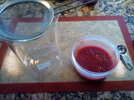
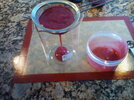
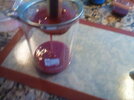
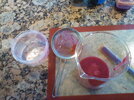
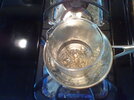
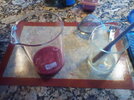
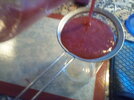
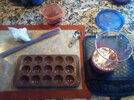

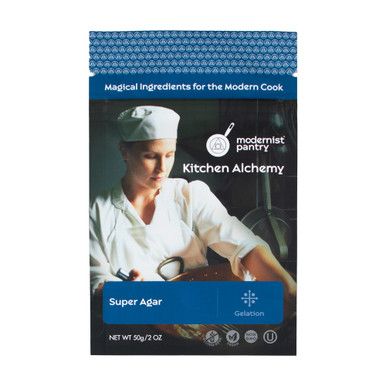




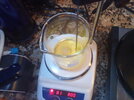
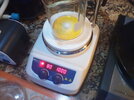
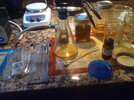
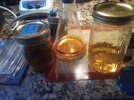

 The methodology for extraction is different but the main take away from this is that syrup provides a more stable product and improves anti inflammatory effects.
The methodology for extraction is different but the main take away from this is that syrup provides a more stable product and improves anti inflammatory effects.